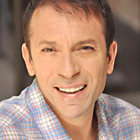
Our nation’s greatest challenge in the 21st century will be to control healthcare costs for seniors. Too many seniors are ignorant of preventative health choices and are immobilized by their health challenges. This attitude contributes to a growing incidence of lifestyle diseases especially in old age and an emphasis on treatment as opposed to prevention. The solution is not going to come from technology or from the government but from the individual. The challenge is how do motivate seniors to start moving or eating well?
In a recent article in The New York Times, Jane Brody explores the link between motivation and movement. In her article, Michelle Segar, a motivational psychologist at the University of Michigan, argues that the “health” and “weight loss brand” doesn’t create desire in people to move. More emotional impulses are at work, such as aspirational, social, spiritual, love and sexual impulses, which have a greater effect on our behavior then we realize.
There is a way to rebrand exercise as sexy and fun and slip the spirituality part in the back doors through an engaging combination of yoga movements and breathing exercises with salsa dance rhythms. I call it Yomenco.
My staff and I are imparting this entertainment style of exercise in 80 different eldercare facilities across the New York metro area. Many of my students are in wheelchairs. But their energy and enthusiasm for this type of physical stimulation carries them through the session. The movements enhance their stamina and markedly improve their mental state.
In these classes many seniors are getting up and out of the wheelchair to dance and their nurses, staff, families and caregivers are dancing with them and in the halls. Yomenco, with its Latin/African music creates a bridge to the caregivers, strengthening community and enhancing quality of life for everyone. This program creates this type of spontaneous joy, self-confidence and celebration, amazing things are happening.
Yomenco helps them all to be present in the moment so they can escape their physical, mental and emotional challenges, and remember and connect to moments of joy especially the importance of music and dance. Scientific studies at institutions such as Harvard University reveal that these exercises have the potential to slow the progression of diseases such as Alzheimer’s and Dementia.
I also have developed a therapeutic yoga program for rehabilitation that can reduce re-admission rates. By blending the ancient Eastern healing art of yoga with Western science, we can empower patients, especially seniors to partner in their health and wellness. The patients in these programs have recognized improved breathing, sleep, emotional well-being and enhanced balance. The program takes an approach similar to Alcoholics Anonymous in that it uses spirituality and group dynamics to help people overcome attachments to unhealthy behaviors.
Movement can have a profound effect on people’s mind and bodies. So why not turn up the music and grab a dance partner? You may be surprised at the results.
Dance and Yoga instructor Bruce Van Horn founded Yoga for Business Inc., which applies Eastern traditions to eldercare and rehabilitation.




